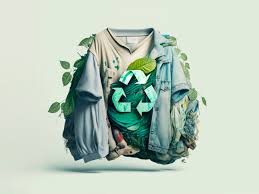As the fashion industry continues to evolve, sustainability has become a central focus. The upcoming 2024 fashion shows are set to highlight this shift, showcasing a range of designs and practices that prioritize environmental responsibility. From the use of eco-friendly materials to ethical production methods, designers are embracing the challenge of creating beautiful, sustainable fashion. This article delves into the sustainable fashion trends that are expected to dominate the 2024 runway shows and explores the broader impact of these efforts on the industry and the planet.
1. Eco-Friendly Materials: The Foundation of Sustainable Fashion

One of the most significant aspects of sustainable fashion in 2024 is the use of eco-friendly materials. Designers are increasingly moving away from synthetic fabrics that harm the environment and are instead opting for natural, biodegradable, and recycled materials. This shift is crucial in reducing the fashion industry’s carbon footprint and minimizing waste.
Key Materials to Watch:
- Organic Cotton: Organic cotton continues to be a popular choice for sustainable fashion designers. Unlike conventional cotton, organic cotton is grown without harmful pesticides and chemicals, making it a more environmentally friendly option.
- Recycled Fabrics: Recycled materials, such as polyester made from post-consumer plastic bottles, are gaining traction in the fashion world. These fabrics reduce the need for virgin resources and help keep waste out of landfills.
- Hemp and Bamboo: Hemp and bamboo are two natural fibers that are becoming increasingly popular in sustainable fashion. Both plants grow quickly and require minimal water and pesticides, making them highly sustainable choices for fabric production.
- Vegan Leather: Vegan leather, made from materials like pineapple leaves (Piñatex), mushrooms, or apple peels, offers an animal-friendly alternative to traditional leather. This innovative material is not only cruelty-free but also more sustainable than conventional leather, which has a significant environmental impact due to the livestock industry.
These eco-friendly materials are set to take center stage at 2024 fashion shows, as designers seek to balance style with sustainability.
2. Ethical Production Practices: Prioritizing Fair Labor and Reducing Waste
Sustainable fashion is about more than just the materials used; it also encompasses the production process. Ethical production practices are becoming a top priority for many designers and brands, as they seek to reduce their environmental impact and promote fair labor conditions.
Key Practices to Watch:
- Fair Trade Production: Fair trade certification ensures that workers are paid fair wages and work in safe conditions. In 2024, we can expect to see more designers partnering with fair trade-certified factories and cooperatives to produce their collections.
- Upcycling and Zero-Waste Design: Upcycling involves repurposing existing materials or garments into new designs, while zero-waste design focuses on minimizing fabric waste during the production process. Both practices are gaining popularity as designers look for ways to reduce waste and make the most of available resources.
- Local and Small-Scale Production: Producing garments locally and on a smaller scale can reduce the carbon footprint associated with transportation and mass production. In 2024, we are likely to see more designers opting for local production methods and supporting small, artisanal workshops that prioritize sustainability.
These ethical production practices are crucial for creating a more sustainable fashion industry and ensuring that fashion is not only environmentally friendly but also socially responsible.
3. Circular Fashion: Extending the Life Cycle of Clothing
Circular fashion is another trend that is expected to dominate the 2024 shows. The concept of circular fashion revolves around creating garments that can be reused, repaired, and recycled, ultimately extending the life cycle of clothing and reducing waste.
Key Circular Fashion Trends:
- Rental and Resale Platforms: The rise of fashion rental and resale platforms is helping to promote a more circular approach to fashion. In 2024, we can expect to see more designers collaborating with rental platforms or creating collections specifically designed for resale, encouraging consumers to invest in high-quality, long-lasting pieces that can be passed on rather than discarded.
- Repair and Customization: Repair and customization services are gaining popularity as consumers look for ways to extend the life of their clothing. Designers are increasingly offering repair services or creating garments that can be easily altered or customized, allowing consumers to update their wardrobes without buying new items.
- Cradle-to-Cradle Design: Cradle-to-cradle design focuses on creating products that can be fully recycled at the end of their life cycle. In 2024, we are likely to see more designers embracing this approach, creating garments that can be easily disassembled and recycled, reducing waste and conserving resources.
Circular fashion is a vital component of the sustainable fashion movement, helping to reduce the environmental impact of the fashion industry and encouraging a more mindful approach to consumption.
4. Tech-Driven Sustainability: Innovation in Fashion
The intersection of technology and fashion is leading to exciting developments in sustainable design. From smart fabrics to AI-driven design processes, technological innovations are helping designers create more sustainable fashion in new and innovative ways.
Key Technological Innovations:
- 3D Printing: 3D printing technology is being used to create garments with minimal waste. This technique allows designers to create precise patterns and shapes without the need for excess fabric, reducing the amount of waste generated during production.
- Smart Fabrics: Smart fabrics, such as textiles embedded with sensors or made from biodegradable materials, are revolutionizing the fashion industry. These fabrics can adapt to environmental conditions or decompose naturally at the end of their life cycle, offering new possibilities for sustainable design.
- AI-Driven Design: Artificial intelligence (AI) is being used to optimize the design process, helping designers create more sustainable garments. AI can analyze data on consumer preferences and trends, allowing designers to create products that are more likely to be worn and cherished, reducing waste from unsold inventory.
These technological innovations are pushing the boundaries of sustainable fashion, enabling designers to create eco-friendly garments in new and exciting ways.
5. The Broader Impact of Sustainable Fashion

The focus on sustainability in fashion is not just about creating eco-friendly garments; it’s also about driving change in the industry as a whole. The 2024 fashion shows are set to highlight the broader impact of sustainable fashion, from raising awareness about environmental issues to influencing consumer behavior.
Key Impacts to Watch:
- Consumer Awareness: As more designers embrace sustainability, consumer awareness about the environmental impact of fashion is growing. The 2024 fashion shows will play a crucial role in educating consumers about the importance of making sustainable choices and supporting eco-friendly brands.
- Industry Collaboration: Sustainable fashion is not just the responsibility of individual designers; it requires collaboration across the entire industry. In 2024, we can expect to see more collaborations between designers, manufacturers, and retailers to promote sustainability and create a more eco-friendly fashion ecosystem.
- Policy and Regulation: Governments and industry organizations are also playing a role in promoting sustainable fashion. In 2024, we may see new policies and regulations aimed at reducing the environmental impact of the fashion industry, from restrictions on harmful chemicals to incentives for sustainable production practices.
The shift toward sustainable fashion is creating positive change in the industry, helping to reduce its environmental impact and promoting a more responsible approach to fashion.
Conclusion
Sustainable fashion is set to take center stage at the 2024 fashion shows, with designers embracing eco-friendly materials, ethical production practices, and innovative technologies. As the fashion industry continues to evolve, sustainability is becoming a top priority, driving change across the industry and influencing consumer behavior. Whether through the use of organic cotton, the promotion of circular fashion, or the adoption of smart fabrics, sustainable fashion is helping to create a greener future for the industry and the planet.


